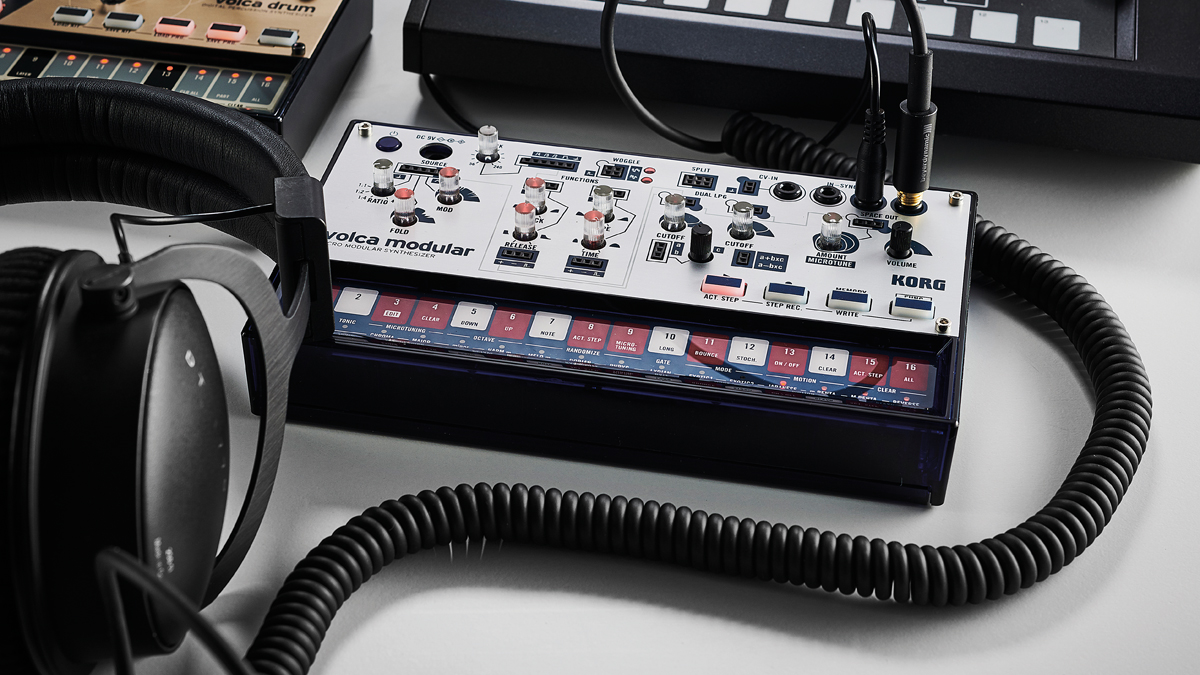MusicRadar Verdict
It may be slightly fiddly and a little complicated, but if you’re willing to give in to its experimental ethos, the Volca Modular is endless fun.
Pros
- +
An analogue West Coast synth for under £200!
- +
Creative, experimental sequencing tools.
- +
Endless fun to patch and experiment with.
Cons
- -
Can get very fiddly.
- -
More complex and less intuitive than other Volcas.
MusicRadar's got your back
Leaked images of the Volca Modular hit the internet several days before it was officially unveiled by Korg. Reaction was, perhaps understandably, sceptical; a Buchla-inspired modular packed in a Volca frame - surely that couldn’t be anything more than the stuff of fanboy Photoshop fantasies.
The Volca Modular is real, though, and fully lives up to that promise. It’s a mostly analogue, fully-patchable synthesiser built into a compact and portable frame. As with all other instruments in the range, it’s powered by AA batteries (or an optional DC adapter), packs a built-in speaker and can be controlled by its onboard touchstrip keyboard-come-sequencer.
Technically speaking, this is a semi-modular instrument, since there is a pre-routed signal path and it can generate sound from the keyboard without the need to patch individual modules together. The level of patchablity here is more extensive than most semi-modulars though, with multiple inputs and outputs for pretty much every element, as well as several utilities for splitting, combining and attenuating signals.
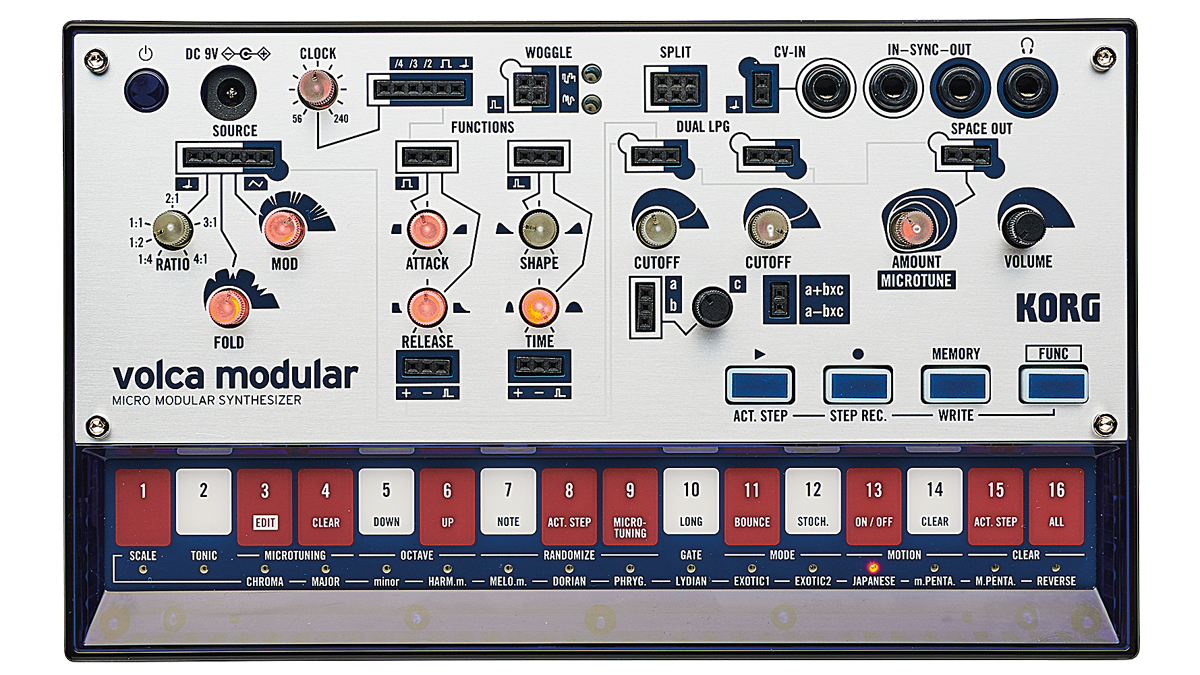
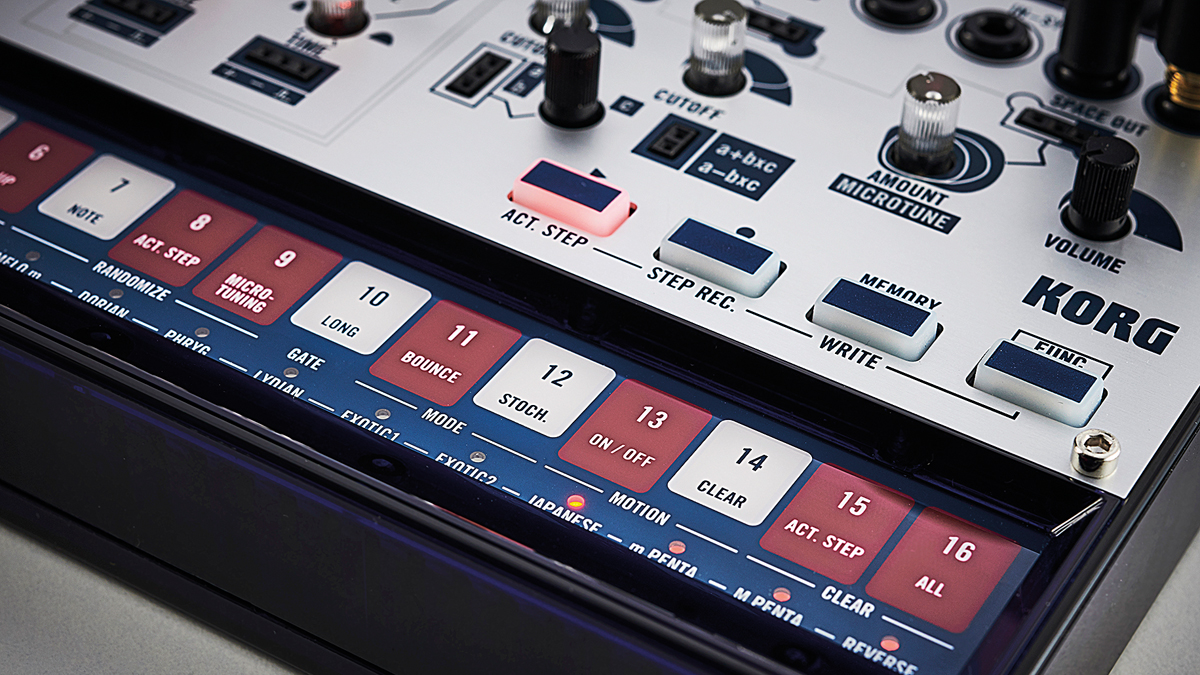
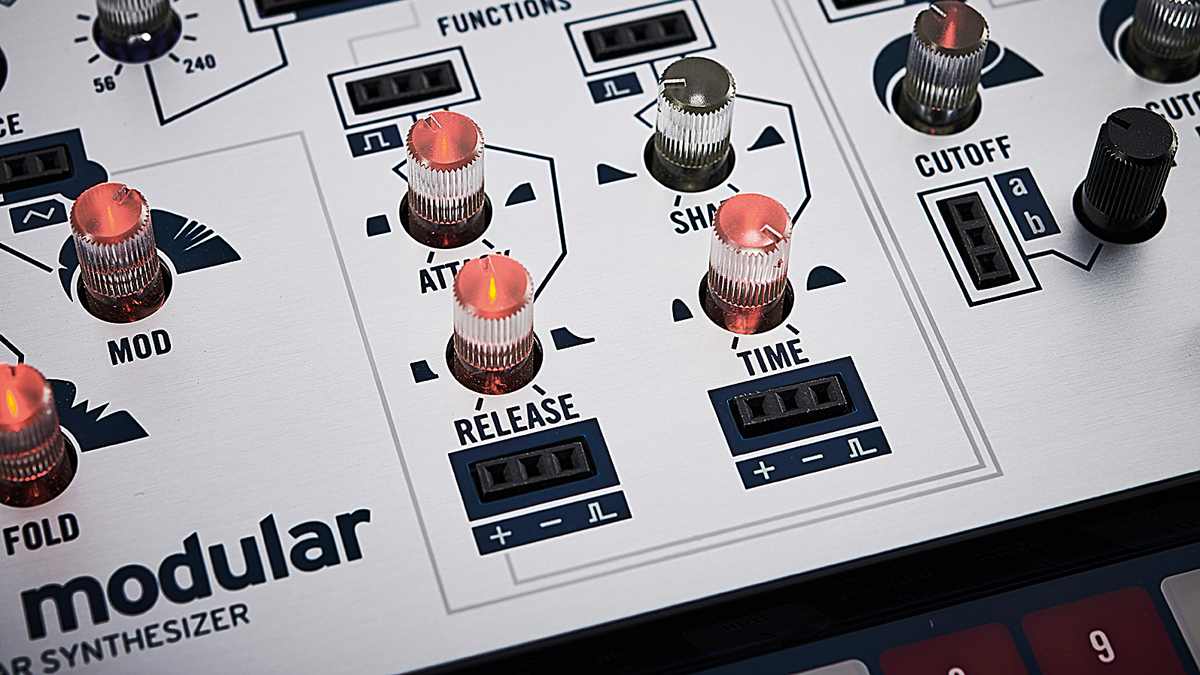
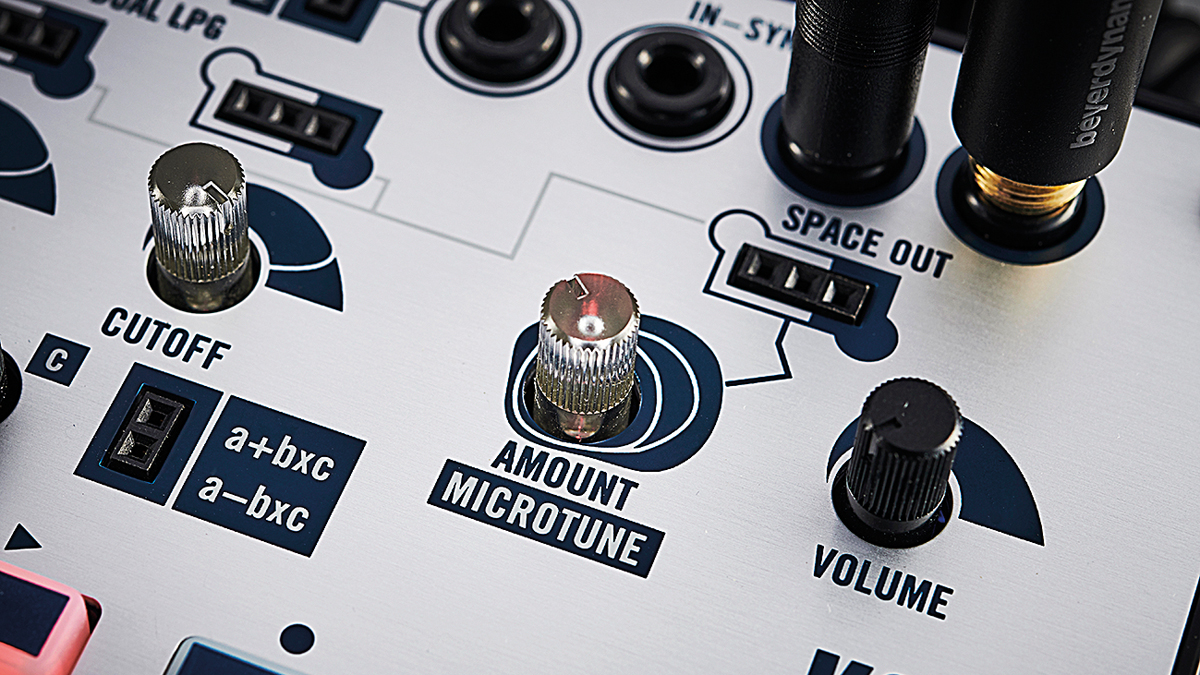
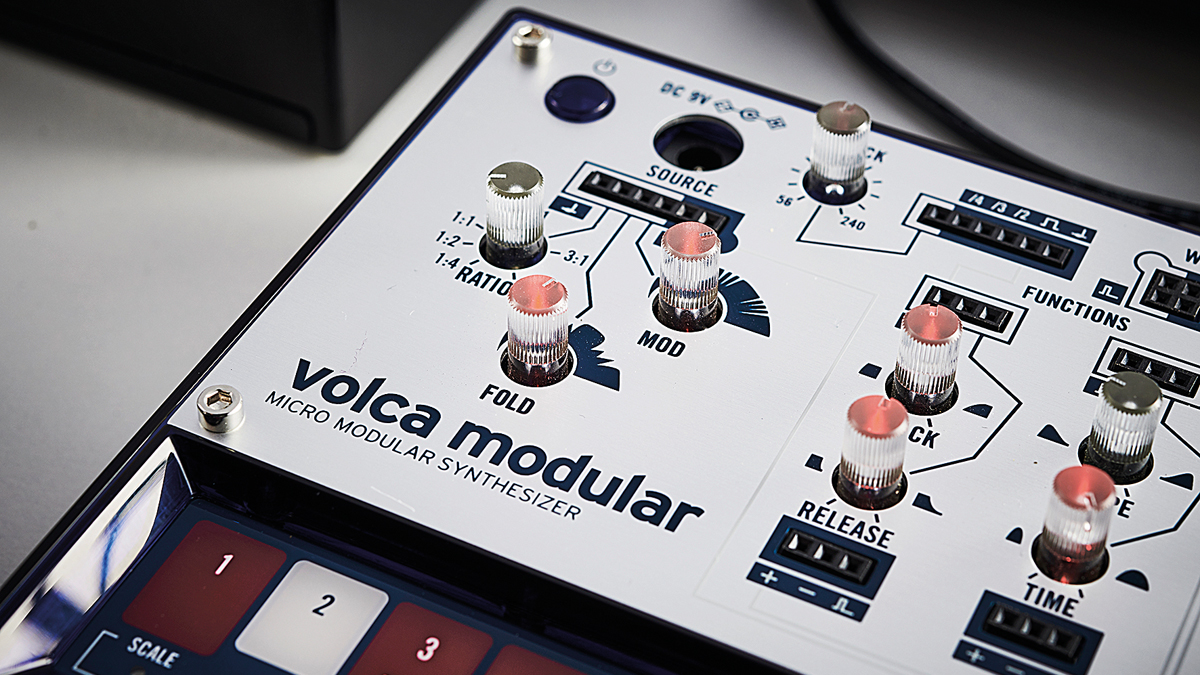
The real triumph of the Volca Modular, however, lies in Korg’s decision to use a selection of synth elements influenced by ‘West Coast’ instrument design. West Coast synthesis is generally linked to the early synth designs of Don Buchla and Serge Tcherepnin, two California-based - hence the name - synth pioneers, who were creating modular and semi-modular instruments in the late-’60s and early-’70s.
Unlike the more common ‘East Coast’ subtractive synths like the Moog modulars, West Coast synths tend to make use of complex oscillator modulation, as well as offering distinctive features such as function generators and low-pass gates.
Sonically, West Coast synths tend to lean more towards experimental, metallic and atonal sounds, but can also be great for timbres that feel more natural and ‘real instrument’-like than their East Coast counterparts.
California Soul
In the case of the Volca Modular, the West Coast influence begins in the oscillator section, which makes use of two triangle wave VCOs in a carrier-modulator relationship to achieve FM synthesis sounds. Two rotaries control the relationship between these two VCOs: Mod adjusts the amount of modulation applied while Ratio controls the pitch of the modulator signal in relation to the carrier.
Want all the hottest music and gear news, reviews, deals, features and more, direct to your inbox? Sign up here.
By default, the carrier pitch tracks that keyboard/sequencer, although there are patch inputs for the carrier pitch, ratio and modulation amount. The oscillator section also features a wavefolder, which applies an inversion to the shape of the oscillator’s output signal, creating additional, gritty harmonics. The depth of this effect can be controlled by a front panel rotary or patch input.
Following the pre-patched routing, the oscillator signal is then fed into one of two low-pass gates. These are another common characteristic of West Coast synth designs. They are, in effect, a combination between a non-resonant low-pass filter and a standard VCA, with a single control that affects both the volume and harmonic quality of the sound. Having two of these onboard opens up lots of possibilities, particularly since the oscillator has separate output patch points for both the carrier and modulator signals.
This effectively means that the two triangle VCOs can be routed and filtered independently. It’s worth noting too that, unlike some semi-modular synths, patching from an output on the Volca Modular doesn’t break the internal routing, meaning that, for example, the modulator can be patched to an LPG whilst still modulating the main oscillator output, or the carrier can be routed to both LPGs simultaneously (without needing splitting first).
The Volca Modular’s sequencer boasts a number of upgrades compared to those found on the rest of the range. Firstly, there’s a scale mode here, with 14 selectable scales plus a micro-tuning function, which allows each note on the keyboard to be individually tuned +/- 100 cents. There are several randomisation tools, which can be used to generate note data, randomise micro-tunings or randomly assign which steps are currently active. There are multiple sequencer directions, too, with standard left-to-right playback accompanied by bounce and stochastic modes, the latter of which offering semi-randomised playback whereby the sequencer will jump back and forth through assigned sequencer steps. There’s also a simple long/ short gate selector, for adjusting the duration of all sequencer steps.
Most common Volca features make a return, too. Korg’s Motion Sequence automation system allows movement for all front panel rotaries to be recorded to the sequencer. While, given its hands-on analogue nature, the Modular can’t save patch presets, it does still allow for 16 patterns to be saved and recalled, including Motion Sequence data.
Modulation is provided by two Functions, which are essentially simple envelope generators. The first is an attack-hold-release envelope with controls for the Attack and Release time. The second is a two-stage rise-fall generator with a Shape control that manipulates the ratio of attack to decay time, and a Time control that determines the overall length.
Both Functions have positive and inverted outputs, modulation inputs for their controls, as well as gate inputs and end trigger outputs. In both cases, the latter two elements can be patched into one another - end trigger out into gate in - so that the Functions can act as looping envelopes or, in the case of the rise-fall generator, a shapable LFO.
The Modular also has a sample and hold circuit, labelled Woggle. By default, this uses a pink noise generator as its sample source, but it has both sample and trigger inputs, plus stepped and smoothed outputs.
At the end of the pre-routed signal path is a digital reverb effect, labelled Space Out. This is a smart edition; without it, the Volca Modular can sound dry and lifeless, but just a little of the effect can really bring the sound to life, adding depth as well as a touch of stereo width. The Space Out module has a single Amount control that adjusts the dry/wet and decay of the sound simultaneously. It’s not the most natural sounding reverb but it is hugely characterful – lots of short, digital-sounding refl ections pushing into short-delay/ chorus-like territory at higher levels.
Separate from the pre-patched signal chain is a pair of utility modules. The first is a dual lane signal splitter, with two inputs each feeding into a pair of outputs, allowing two individual audio or control signals to be split in two. The second is a utility for combining and attenuating signals, featuring three inputs, labelled A, B and C, along with two outputs.
Here, any signal fed into B can be attenuated by C (either using the patch input, or a front panel rotary). B is then combined with any signal fed into A - depending on which output is used, the attenuated signal of B is either added to or subtracted from A. When nothing is connected to B, that input defaults to a fixed 3.3V signal. Given all the options, it’s a powerful little utility.
Patching in
Control-wise, the Volca Modular has patchable outputs from the sequencer, as well as a separate CV input. The sequencer has a total of five outputs, for pitch, gate and three gate division outputs, which send a signal for every second, third and fourth gate respectively. These latter outputs are great for adding polyrhythmic movement.
The Modular’s CV input replaces the Volca range’s standard MIDI input. The input port itself is a stereo 3.5mm jack port, allowing separate signals to be sent via the left and right channels. Each of these has its own patchable output on the Modular’s front panel. The left is formatted for CV control signals, while the right is set up for a 1V/octave pitch input.
Next to this are the standard Volca pulse sync in and out ports, used for clock synchronisation with other bits of analogue gear.
There is a lot going on within the Volca Modular’s diminutive frame. To make it work Korg has opted to use micro patch points, which make use of basic wire-tipped cables, rather than standard Eurorack 3.5mm connections. It’s an understandable design choice, but it does make the Volca Modular, at times, very fiddly to patch and manipulate. Once more than one or two wires gets involved, things become very busy.
The wires themselves are quite flimsy, too, and we wonder how durable they’ll prove. Fortunately Korg supplies a generous amount of them in the box.
The fact remains that this is a complicated instrument that specialises in experimental and rather niche sounds.
It’s interesting to compare the Volca Modular to the original Volca trio – the Beats, Bass and Keys – to see just how far the range has come. Those instruments were designed with immediacy and accessibility in mind and, as great as the Volca Modular is, undoubtedly some of that original ethos has been lost as a result of its complexity.
As someone with a fairly solid understanding of both the history and basic principles of synthesis, it’s easy to get excited by the possibilities offered by the Modular, but we do wonder how well that will translate to the mass market. Korg has done a stellar job of transferring unusual synthesis tools to a product at a price point where they’ve never been available previously, but the fact remains that this is a complicated instrument that specialises in experimental and rather niche sounds.
On its own terms, though, the Volca Modular is an absolute triumph. By bringing affordable left-of-centre sounds and synthesis tools, hopefully it will open up a world of sound design experimentation for cash-strapped producers who previously could only dream of getting hands-on with West Coast hardware.
- More of the best cheap synthesizers
I'm the Managing Editor of Music Technology at MusicRadar and former Editor-in-Chief of Future Music, Computer Music and Electronic Musician. I've been messing around with music tech in various forms for over two decades. I've also spent the last 10 years forgetting how to play guitar. Find me in the chillout room at raves complaining that it's past my bedtime.
